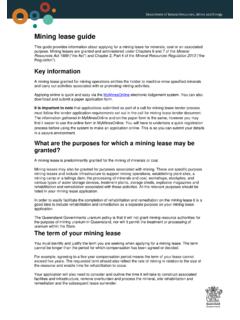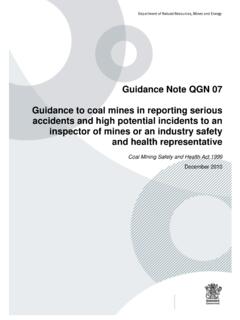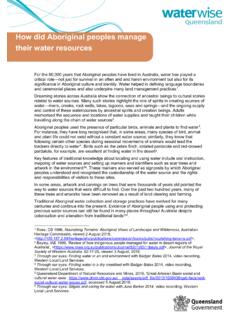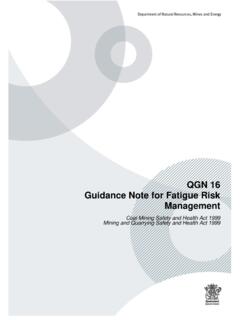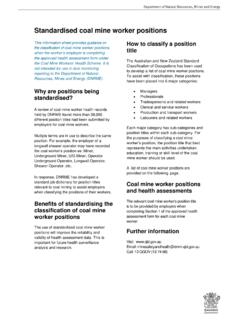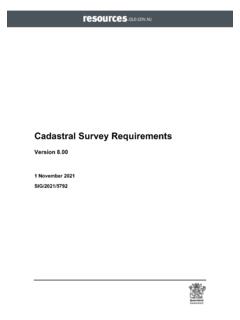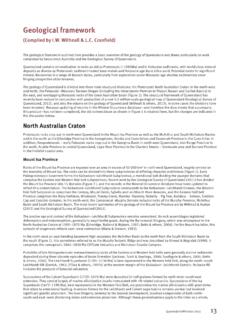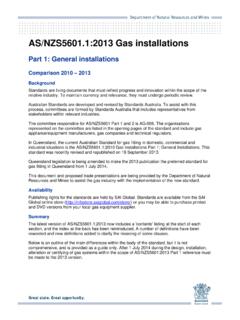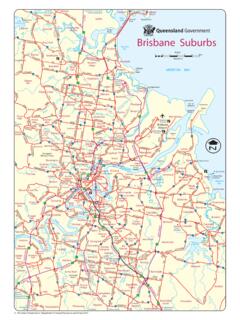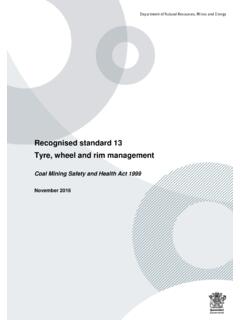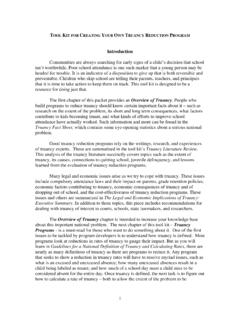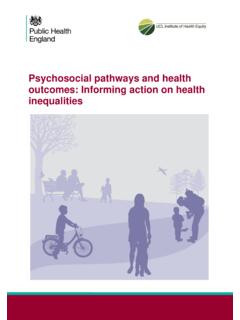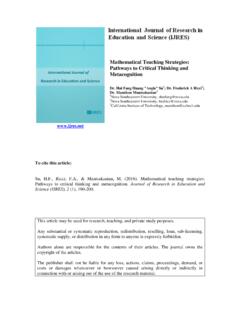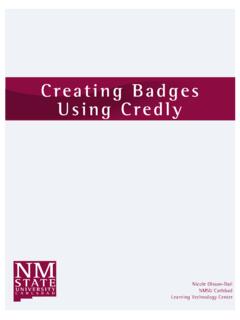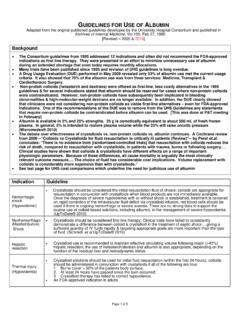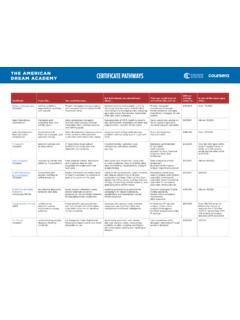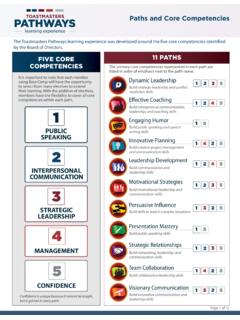Transcription of CMWHS clinical pathways guideline - resources.qld.gov.au
1 CMWHS clinical pathways guideline Purpose The Coal Mine Workers' Health Scheme ( CMWHS ) clinical pathways guideline (the guideline ) documents the recommended process for follow-up investigation and referral to appropriate medical specialists of workers with abnormal results on screening tests. The guideline will assist in reaching a diagnosis on potential cases of coal mine dust lung disease (CMDLD) in a reasonable time frame, reducing worker anxiety and providing more consistent outcomes. Background Monash University in collaboration with the University of Illinois at Chicago completed an independent review of the respiratory component of the CMWHS in 2016.
2 The review was commissioned by the Queensland Government after new cases of coal workers' pneumoconiosis (CWP) were identified. One of the review's recommendations was that a clinical pathway for follow-up investigation and referral should be developed and incorporated into the CMWHS . The CMWHS provides compulsory pre-employment, periodic and retirement medical examinations of coal mine workers employed in Queensland. The guidelines were developed by the CMDLD Collaborative Group, a group of health specialists from the Australasian Faculty of Occupational and Environmental Medicine, the Thoracic Society of Australia and New Zealand, the Australian and New Zealand Society of Occupational Medicine and the Royal Australian and New Zealand College of Radiologists.
3 The group is supported by Professor Robert Cohen MD of the University of Illinois at Chicago, Queensland Health and the Department of Natural Resources, Mines and Energy (DNRME). The guidelines have been endorsed by Queensland's Chief Health Officer, the Royal Australasian College of Physicians and its Australasian Faculty of Occupational and Environmental Medicine. Implementation DNRME expects that Nominated Medical Advisers, other doctors and medical providers that are registered with the department to offer health services to Queensland's coal mine workers will implement the guidelines when assessing coal mine workers, unless there is a valid medical reason for an alternate course of action.
4 Please note that the Thoracic Society of Australia and New Zealand has developed Standards for the Delivery of Spirometry for Coal Mine Workers. While this standard provides a general method for the interpretation of spirometry, the clinical pathways guideline is to be applied by the doctor with responsibility for interpreting the spirometry results and deciding on the referral pathway . The guidelines should be used in association with the health assessment requirements of the Coal Mining Safety and Health Regulation 2017, the associated health assessment form and other conditions of registration.
5 As provided for in the Regulation, if a coal mine worker is not satisfied with a health assessment outcome that reports that they are unable to carry out their tasks at the mine without creating an unacceptable level of risk, they are able to submit to their employer a further health assessment from another doctor of their choice. The employer will then request that the original Nominated Medical Adviser reviews the further assessment and provides the employer and the worker with a report on their review. If there are conflicting heath assessment reports, the worker or the employer can seek DNRME to arrange for an independent review of the conflicting assessments and the review report by a relevant specialist.
6 This review may include another health assessment or medical examination to resolve the conflict in the reports. Coal Mine Workers' Health Scheme clinical pathways guidelines Spirometry (A) Chest X-Ray (CXR) Other All CXRs (PA) to be classified by two B readers (B). Absolute FEV1. <LLN or <70%. predicted (GLI) CXR shows Unexplained Absolute FEV1. OR CXR 0/-, 0/0 or 0/1 CXR > 1/0 (after abnormal finding significant Spirometry normal >70% but <80% Normal Longitudinal (D) dual read) (E) unrelated to dust respiratory predicted (GLI1) decline of FEV1 > exposure symptoms (F).
7 15% change of predicted GLI (C). Referral by NMA2 for further assessment. To include as much detail as possible about dust exposure. (G). Medical review for suspected or possible Coal Mine Dust Lung Disease, referral to respiratory physician (may include lab Refer to normal treating GP for lung function testing +/- HRCT). No further immediate action, fit for work and Review Spirometry in 12 months (as a assessment. NMA2 to determine if review as a routine Coal Mine Workers' review in the Coal Mine Workers' Health impacts on fitness for work.)
8 Review Once diagnosis is clarified by Thoracic Health Scheme assessment in 5 years. Scheme). period as determined by NMA2 physician, requires review by, or discussion with Occupational Physician for Fitness for work assessment or other workplace actions. (H). _____. 1. Global Lung Function Initiative 2. Nominated Medical Advisor Supporting Documentation for Coal Mine Workers' Health Scheme clinical pathway guidelines A: High quality spirometry is essential (including quality assurance processes for the equipment and training).
9 B: All CXRs (PA) are classified by two B-readers, with additional readers available for adjudication. A total of up to 5 readers may be required. Please Note: The CMDLD Collaborative Group recommends the following transitional arrangements in jurisdictions that do not immediately adopt the use of B-readers: until 31/01/2019, this task may also be performed by registered radiologists whose names appear on the register of clinical radiologists for CWP screening, maintained by the Royal Australian and New Zealand College of Radiologists.
10 C: The threshold for FEV1 and impairment is defined by the comparison of absolute measurements to reference values, or longitudinal studies that show excessive declines in FEV1. The threshold is met if: - The absolute value is less than the Lower Limit of Normal ( ) or less than 70% predicted, from Global Lung function Initiative (GLI) reference values whichever is lower assuming that age, height and race are entered correctly. o Please Note: The decision to use <70% FEV1 as a cut-off was reached because choosing a higher cut-off value (such as <80%) would have resulted in a greater number of false positive results.
